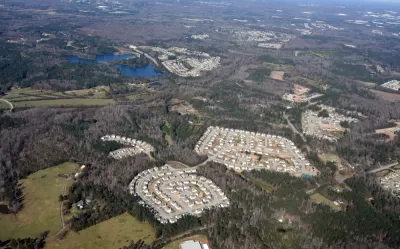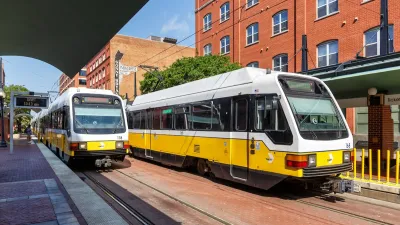Transforming suburban sprawl is a massive undertaking, but these small steps can help communities understand their needs and assets and develop clear, actionable goals for the future.

Pedestrianizing the suburbs might seem like a monumental challenge, writes Robert Steutenville, but a new report from the Congress for New Urbanism (CNU) and the Michigan Municipal League outlines a list of small, incremental steps that communities can implement to move toward less auto-oriented, more walkable and mixed-use neighborhoods. "Reorienting suburban neighborhoods for pedestrians requires an incremental yet integrated approach, calibrated to local needs, prioritized according to public aspirations, and targeted to specific areas within the community."
The list includes "proven techniques" drawn from successful projects from across the United States, ranging from identifying existing assets and future goals to aligning codes and ordinances to reforming parking regulations. These interventions act at a hyper-local level to identify community needs, leverage existing resources, and change regulations to support and anticipate higher density and pedestrian-friendly infrastructure. Adjusting land use regulations and parking requirements can go a long way toward "offering an alternative vision for existing buildings" and "adapting from placeless sprawl to walkable urbanism" by easing the way for adaptive reuse and denser development. "The process of rescaling suburban communities can be long and difficult, but seeing the road ahead will help a municipality measure their success, manage development outcomes, and maintain a sense of place amidst change."
FULL STORY: Incremental steps toward pedestrian-friendly suburbs

Alabama: Trump Terminates Settlements for Black Communities Harmed By Raw Sewage
Trump deemed the landmark civil rights agreement “illegal DEI and environmental justice policy.”

Planetizen Federal Action Tracker
A weekly monitor of how Trump’s orders and actions are impacting planners and planning in America.

Why Should We Subsidize Public Transportation?
Many public transit agencies face financial stress due to rising costs, declining fare revenue, and declining subsidies. Transit advocates must provide a strong business case for increasing public transit funding.

Understanding Road Diets
An explainer from Momentum highlights the advantages of reducing vehicle lanes in favor of more bike, transit, and pedestrian infrastructure.

New California Law Regulates Warehouse Pollution
A new law tightens building and emissions regulations for large distribution warehouses to mitigate air pollution and traffic in surrounding communities.

Phoenix Announces Opening Date for Light Rail Extension
The South Central extension will connect South Phoenix to downtown and other major hubs starting on June 7.
Urban Design for Planners 1: Software Tools
This six-course series explores essential urban design concepts using open source software and equips planners with the tools they need to participate fully in the urban design process.
Planning for Universal Design
Learn the tools for implementing Universal Design in planning regulations.
Caltrans
Smith Gee Studio
Institute for Housing and Urban Development Studies (IHS)
City of Grandview
Harvard GSD Executive Education
Toledo-Lucas County Plan Commissions
Salt Lake City
NYU Wagner Graduate School of Public Service





























